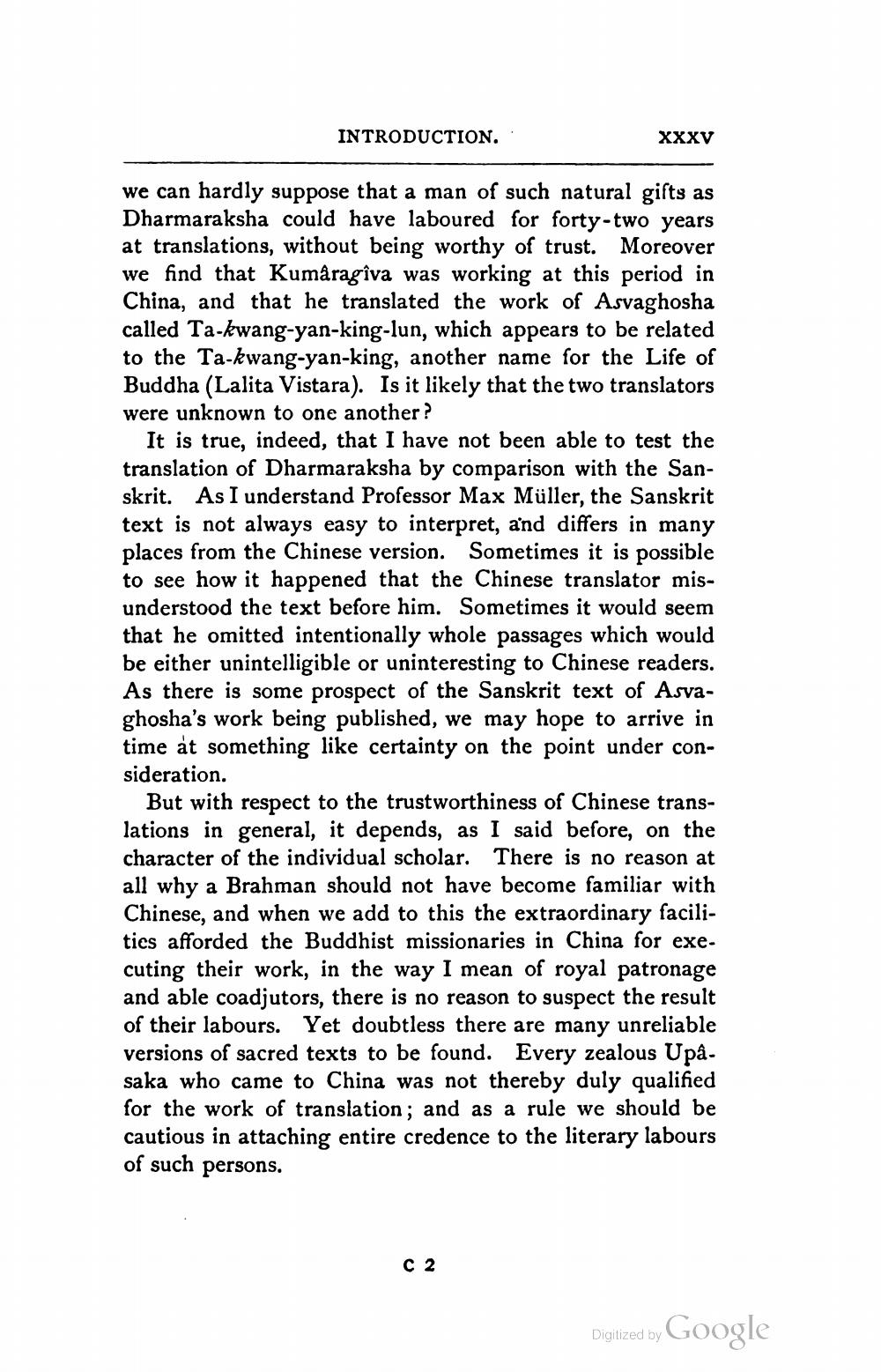________________
INTRODUCTION..
XXXV
we can hardly suppose that a man of such natural gifts as Dharmaraksha could have laboured for forty-two years at translations, without being worthy of trust. Moreover we find that Kumaragiva was working at this period in China, and that he translated the work of Asvaghosha called Ta-kwang-yan-king-lun, which appears to be related to the Ta-kwang-yan-king, another name for the Life of Buddha (Lalita Vistara). Is it likely that the two translators were unknown to one another?
It is true, indeed, that I have not been able to test the translation of Dharmaraksha by comparison with the Sanskrit. As I understand Professor Max Müller, the Sanskrit text is not always easy to interpret, and differs in many places from the Chinese version. Sometimes it is possible to see how it happened that the Chinese translator misunderstood the text before him. Sometimes it would seem that he omitted intentionally whole passages which would be either unintelligible or uninteresting to Chinese readers. As there is some prospect of the Sanskrit text of Asvaghosha's work being published, we may hope to arrive in time at something like certainty on the point under consideration.
But with respect to the trustworthiness of Chinese translations in general, it depends, as I said before, on the character of the individual scholar. There is no reason at all why a Brahman should not have become familiar with Chinese, and when we add to this the extraordinary facilitics afforded the Buddhist missionaries in China for exe. cuting their work, in the way I mean of royal patronage and able coadjutors, there is no reason to suspect the result of their labours. Yet doubtless there are many unreliable versions of sacred texts to be found. Every zealous Upâ. saka who came to China was not thereby duly qualified for the work of translation; and as a rule we should be cautious in attaching entire credence to the
entire credence to the literary labours of such persons.
C2
Digitized by Google




